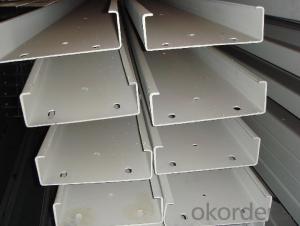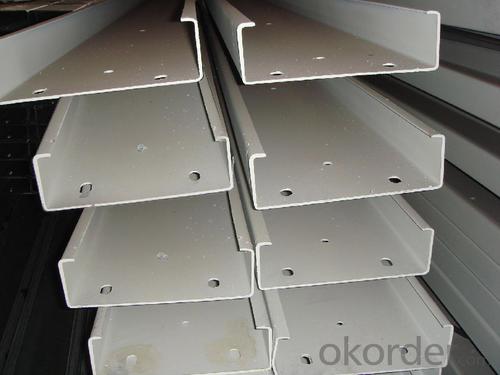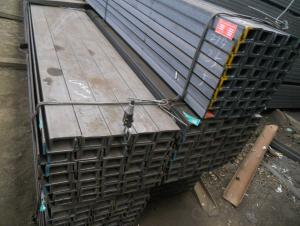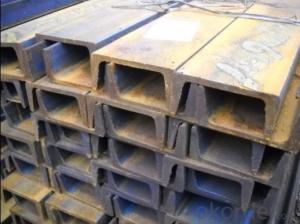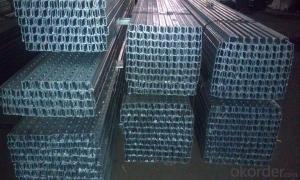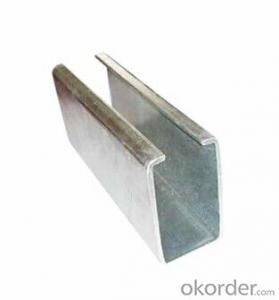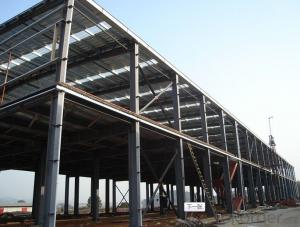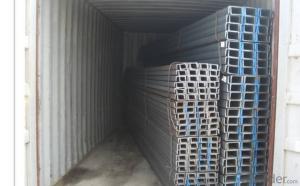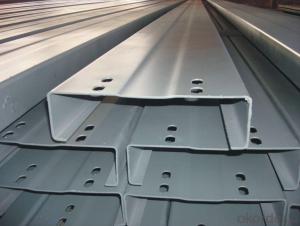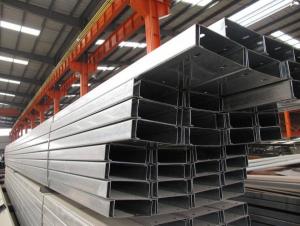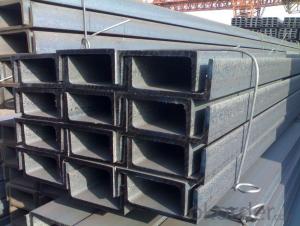C Steel Profile C Channel Manufacturer ,OEM Supplier,UL,NEMA Tested
- Loading Port:
- Tianjin
- Payment Terms:
- TT or LC
- Min Order Qty:
- 25 m.t.
- Supply Capability:
- 24000 m.t./month
OKorder Service Pledge
OKorder Financial Service
You Might Also Like
Product Description of C Steel Profile C Channel Manufacturer ,OEM Supplier,UL,NEMA Tested
C Steel Profile C Channel Manufacturer ,OEM Supplier,UL,NEMA Tested is a standardized formed structural system used in the construction and electrical industries for light structural support, often for supporting wiring, plumbing, or mechanical components such as air conditioning or ventilation systems.
Performance of C Steel Profile C Channel Manufacturer ,OEM Supplier,UL,NEMA Tested:
1.Convenient in construction and save much time and labor.
2.Light and cheap.
3.High mechanical strength.
4.Various kinds of fittings can make up of many combinations also for safety
5.Attractive in appearance.
6.Samples are free
strut channel :slotted or plai
C Channel
Solid channel has no holes predrilled, and must either be drilled on site or mounted in another fashion. Punched channel has round holes, large enough for 5/8 inch threaded steel rod or bolts, punched in the top of the channel at regular 1 7/8 inch centers. Half-slot channel has short, rounded end rectangular slots punched out on 2 inch centers. Slot channel has longer slots on 4 inch centers.
Standard: 41mmx41mm, 41mmX21mm, 41mmx61mm, 41mmX81mm
Wall thickness: 1.5mm, 1.6mm, 2.0mm, 2.5mm, 2.7mm (can produce based on your requirement).
Length:3m (can produce as your requirement)
Holes:28*14mm,18*9mm,13.5*63mm,11*25mm,11*30mm etc
Strut Channel Material :
Carbon steel or SS304 or SS316
Strut Channel Finishes :
Plain, Galvanized, Hot Dipped Galvanized, Polyester Powder Coated (other finishes available on request)
Parts of Our Products
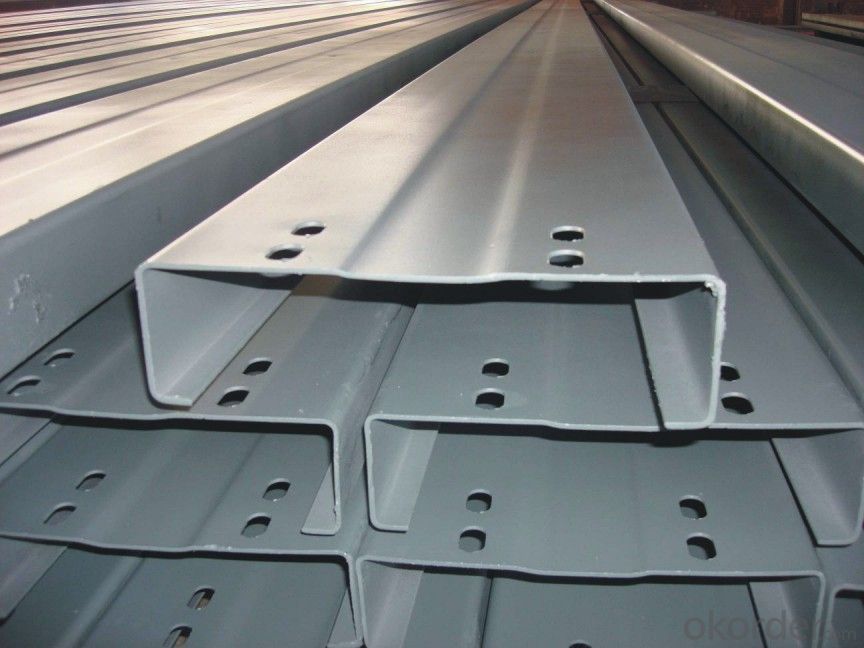
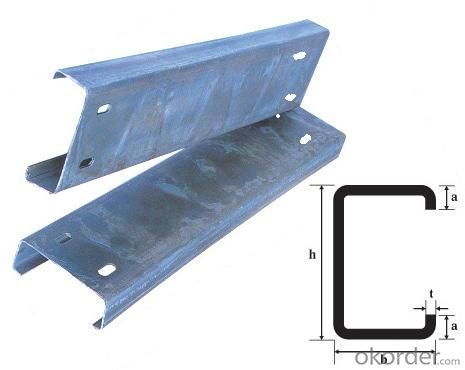
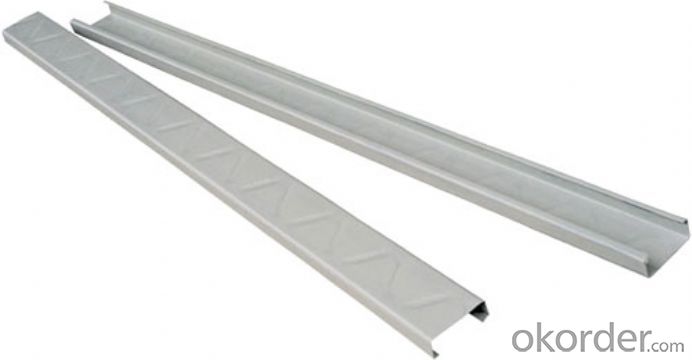
- Q: How do steel channels contribute to the stability of crane runways?
- Steel channels contribute to the stability of crane runways in several ways. Firstly, they provide a strong and rigid support structure for the crane to operate on. The channels are typically made from high-quality steel, which is known for its durability and load-bearing capacity. This ensures that the crane runway can withstand the heavy weight and dynamic loads imposed by the crane during its operation. Moreover, steel channels are designed to distribute the load evenly across the supporting beams or columns. This helps to prevent concentrated stress points and ensures that the load is spread out over a larger area, reducing the risk of structural failure or collapse. By distributing the load effectively, steel channels help to maintain the stability of the crane runway, even when subjected to heavy loads or sudden movements. Another important role of steel channels in crane runways is their ability to resist lateral forces. When a crane moves along the runway, there may be lateral forces generated due to wind, uneven loading, or sudden changes in direction. Steel channels provide a robust framework that can effectively resist these lateral forces, preventing any excessive deflection or sway in the runway structure. This is crucial for maintaining the stability and safety of the crane during its operation. Furthermore, steel channels can be easily fabricated and installed, allowing for efficient construction of crane runways. They can be customized to meet the specific requirements of the crane and the site, ensuring a precise fit and optimal performance. The versatility of steel channels also allows for various configurations and layouts, enabling the design of crane runways that can accommodate different crane sizes and load capacities. In summary, steel channels play a vital role in ensuring the stability of crane runways. Their strength, load-bearing capacity, and ability to distribute loads evenly contribute to the overall structural integrity of the runway. Additionally, their resistance to lateral forces and ease of installation make them an ideal choice for constructing reliable and safe crane runways.
- Q: How do steel channels contribute to the stability of mezzanine floors?
- Steel channels are essential components in the construction of mezzanine floors and play a crucial role in contributing to their stability. These channels, also known as C-channels or C-sections, are made of high-strength steel and are specifically designed to provide structural support and reinforcement. One of the main ways steel channels contribute to the stability of mezzanine floors is by distributing the load evenly across the floor structure. Mezzanine floors are designed to accommodate heavy loads, such as machinery, equipment, or storage materials. The steel channels act as beams that bear the weight and transfer it to the vertical supports or columns. By distributing the load, they prevent localized stress concentration and ensure the overall stability of the floor. Furthermore, steel channels add rigidity to the mezzanine floor system. Due to their shape and structural properties, they offer excellent resistance to bending and torsion forces. This rigidity is crucial in preventing any excessive deflection or movement of the floor, especially when subjected to dynamic loads or vibrations. The stability provided by the steel channels enhances the safety and functionality of the mezzanine floor, allowing it to withstand heavy usage and ensure a secure work environment. Moreover, steel channels contribute to the overall durability and longevity of mezzanine floors. Steel is a highly durable material that can withstand a wide range of environmental conditions, such as temperature variations, moisture, and corrosion. By using steel channels, the structural integrity of the mezzanine floor system is enhanced, minimizing the risk of deformation, sagging, or structural failure over time. This durability ensures that the mezzanine floor can endure heavy loads for an extended period, reducing the need for frequent maintenance or replacement. In summary, steel channels play a vital role in contributing to the stability of mezzanine floors by distributing loads evenly, providing rigidity, and enhancing durability. Their structural properties ensure the safety, functionality, and longevity of mezzanine floors, making them an essential component in their construction.
- Q: 28a difference between channel steel and 28b channel steel
- 180×70×9 18 # B 23200×73 * 7 20 #的22.637200×75×9 20 # B 25.777* * 220 77 7 22 #的24.999220 * * 79 9 22 # B 28.453* * 240 78 7 24 #的26.86240 * * 80 9 24 # B 30.628
- Q: What is the standard length of steel channels?
- The specific industry and application determine the possible variations in the standard length of steel channels. Typically, steel channels are found in standard lengths of 20 feet or 6 meters. These lengths are frequently chosen for their convenience in transportation, handling, and alignment with prevalent building and construction methods. It is worth mentioning that custom lengths can be acquired to meet project-specific needs. Nevertheless, the widely utilized and easily accessible standard length in the market remains 20 feet or 6 meters.
- Q: Can steel channels be used in architectural facades?
- Yes, steel channels can be used in architectural facades. Steel channels are versatile and durable, making them suitable for various architectural applications, including facades. They can be used to create a modern and sleek aesthetic, or to add structural support to the facade. Steel channels can be easily fabricated and customized to meet the specific design requirements of the facade, allowing for a wide range of possibilities in terms of shape, size, and finish. Additionally, steel channels provide excellent strength and stability, making them capable of withstanding the environmental stresses and loads typically encountered in architectural facades.
- Q: How do steel channels perform in high-wind areas?
- Steel channels are a top choice for building structures in areas with high winds because of their strength and durability. Steel is naturally resistant to wind forces and can endure strong winds without significant deformation or failure. The shape of steel channels, resembling a U or C, also enhances their performance in high winds. The open side of the channel allows wind to flow through, reducing the overall wind load on the structure. This design feature helps minimize the pressure caused by the wind, which is especially important in areas with strong winds. Furthermore, steel channels are commonly used alongside other structural components, like beams and columns, to create a strong framework that can withstand the force of the wind. These components are often connected through bolts or welding, ensuring a sturdy connection that further improves performance in high-wind areas. Additionally, steel channels can be fabricated to meet specific project requirements, allowing for customization and optimization of the structural system. This flexibility ensures that steel channels can be engineered and designed to handle the unique wind conditions of a particular location. It is important to note that the performance of steel channels in high-wind areas also depends on other factors, such as the overall structure design, the quality of construction, and adherence to building codes and standards. Proper engineering and construction practices, including appropriate connections and anchoring, are crucial to ensure optimal performance and safety in areas with strong winds. To summarize, steel channels are a highly dependable and efficient choice for structures in high-wind areas due to their inherent strength, shape, and customization capabilities. When designed and constructed correctly, steel channels provide a long-lasting and resilient solution for structures in regions prone to strong winds.
- Q: How do steel channels contribute to the overall sustainability of a construction project?
- Steel channels contribute to the overall sustainability of a construction project in several ways. Firstly, steel channels are made from recycled materials. By using recycled steel, we are reducing the demand for virgin materials and minimizing the environmental impact associated with mining and processing raw materials. This reduces the depletion of natural resources and the energy required for production, making steel channels a more sustainable option. Secondly, steel channels have a long lifespan and require minimal maintenance. They are highly durable and resistant to corrosion, which means they can withstand harsh weather conditions and last for many years without the need for replacement or frequent repairs. This reduces the overall material consumption and waste generation, making the construction project more sustainable in the long run. Furthermore, steel channels are lightweight and easy to transport. This reduces the energy consumption and greenhouse gas emissions associated with transportation, as less fuel is required to move them from the manufacturing facility to the construction site. Additionally, their lightweight nature makes them easier to handle and install, reducing the need for heavy machinery and associated energy consumption during the construction process. Lastly, steel channels can be easily recycled at the end of their lifespan. Unlike other construction materials, steel can be melted down and reused multiple times without losing its properties. This not only reduces the amount of waste sent to landfills but also reduces the need for new steel production, further conserving natural resources and reducing environmental impact. In summary, steel channels contribute to the overall sustainability of a construction project by being made from recycled materials, having a long lifespan, being lightweight and easy to transport, and being recyclable at the end of their life. By incorporating steel channels into construction projects, we can reduce the environmental impact, conserve natural resources, and promote a more sustainable built environment.
- Q: Can steel channels be used for creating partitions or dividers?
- Steel channels are a versatile option for creating partitions or dividers. They are commonly used in construction and fabrication projects due to their strength, durability, and ability to withstand heavy loads. When utilized for creating partitions or dividers, steel channels offer excellent support and stability. They can be easily installed and provide a strong framework for dividing spaces or creating separate areas within a building. Steel channels have various applications in offices, warehouses, industrial facilities, and residential spaces. To meet specific design requirements, steel channels can be customized and combined with other materials like glass or wood to create visually appealing partitions. Moreover, steel channels offer fire resistance, making them suitable for fire-rated partitions in commercial buildings. In conclusion, steel channels are a reliable and practical choice for creating partitions or dividers. Their strength, durability, versatility, and fire resistance make them an ideal option for various construction projects.
- Q: Can steel channels be used for supporting mezzanine floors?
- Indeed, mezzanine floors can be supported by steel channels. In the realm of construction, steel channels are frequently employed due to their robustness and resilience. Their exceptional capacity for bearing substantial loads and withstanding deformation or torsion makes them an ideal choice for providing optimal support to mezzanine floors. Typically, steel channels are combined with other structural elements like beams and columns to establish a strong framework for mezzanine floors. By utilizing steel channels, the structural integrity of mezzanine floors remains intact, allowing them to safely accommodate additional weight, be it storage racks, equipment, or personnel.
- Q: Industrial plant pipe hanger expansion bolts, why add a section of channel, and then connect the screw rod?. The outer expansion bolt of the embedded beam is connected with a section of channel steel, and then the steel bar is hung under the channel steel. Why do you want to do this? What are the advantages?
- Outside the first expansion bolt connected with a section of steel, steel hanging wire hanger form following bar is now commonly used in the expansion and harness
Send your message to us
C Steel Profile C Channel Manufacturer ,OEM Supplier,UL,NEMA Tested
- Loading Port:
- Tianjin
- Payment Terms:
- TT or LC
- Min Order Qty:
- 25 m.t.
- Supply Capability:
- 24000 m.t./month
OKorder Service Pledge
OKorder Financial Service
Similar products
Hot products
Hot Searches
Related keywords
